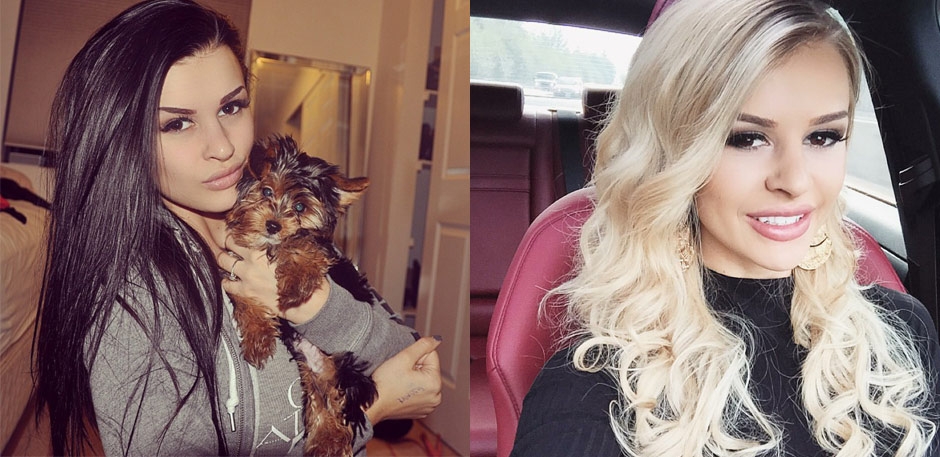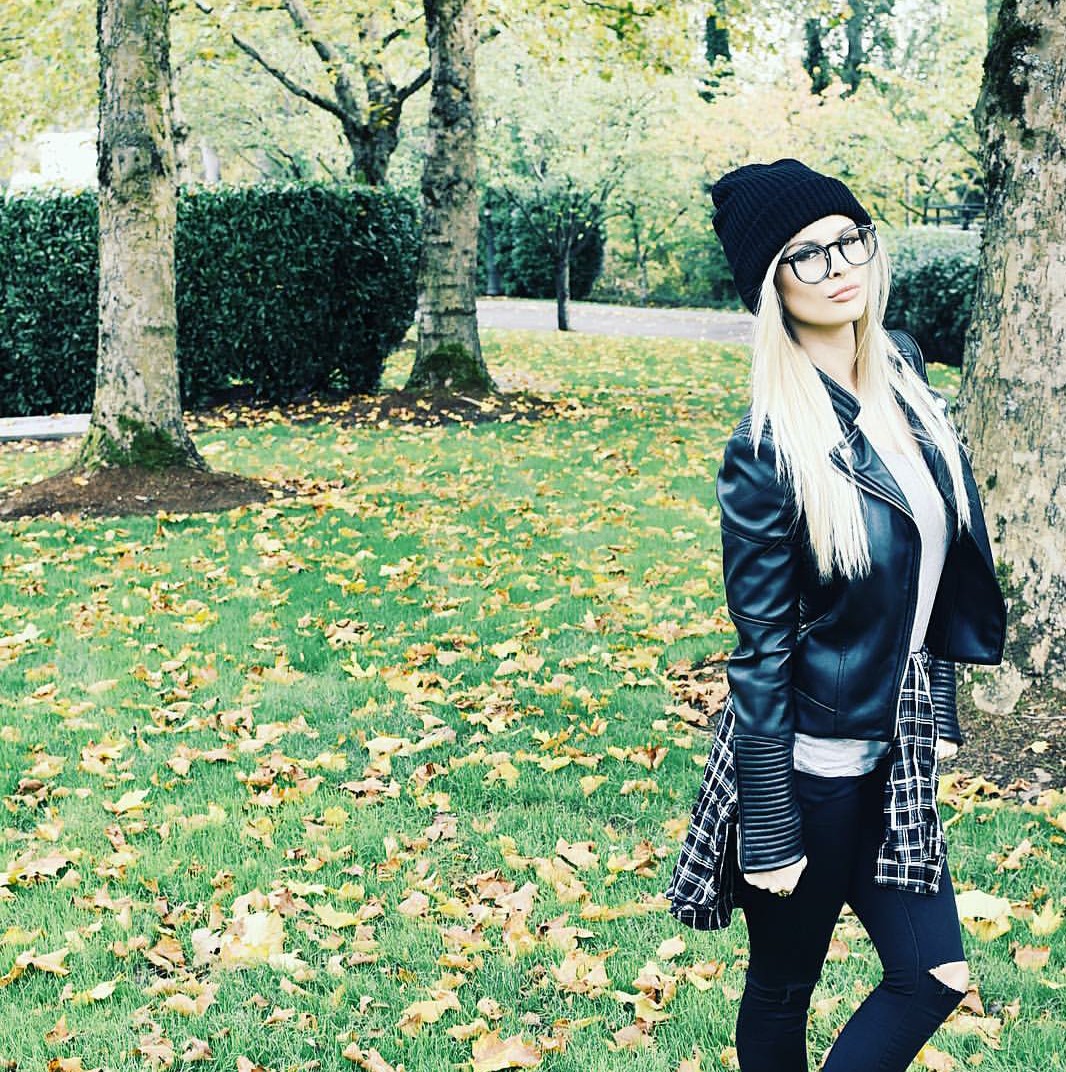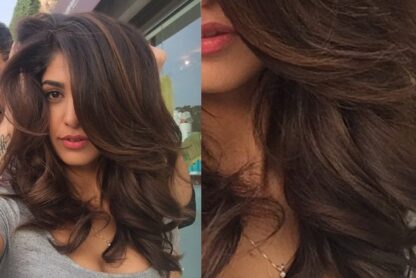Maybe the “gracefully” is a bit exaggerated. But, if you take the right (patient) route to lighter locks, you won’t have to suffer through ugly hair in between your appointments.
However, you should most definitely expect warm tones.
Most people say, “Well, I just don’t want to be orange.” Totally understandable! But, before you get to the blonde you desire, your hair will hit all sorts of colors. And guess what? One of them can be orange.
If hints of orange are something you 100% don’t want to see at all in your hair, consider only doing a shade or two lighter each appointment. And you can still expect to see warm tones. They don’t have to be bright—your stylist should be able to tone them down to a pretty hue before you go even lighter. (But they probably won’t be the tone that you had in mind on the first go.)
So here’s a little breakdown of how lightening works, how to set realistic expectations, and the all-important points of how to keep your hair from melting off!
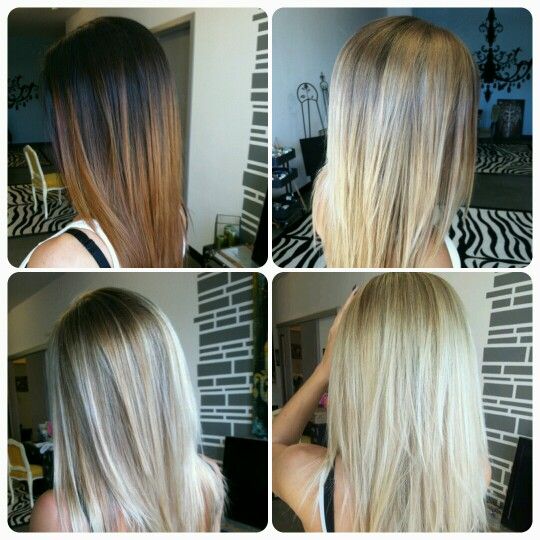
The 1st (and Most Important!) Step
GET A CONSULTATION! Don’t ever let someone color your hair if they didn’t take the time to give you a thorough consultation. Plenty of stylists will start coloring your dark hair without a consultation—don’t let their casual confidence convince you that it will all be okay.
What should occur during a consultation?
First, you should be asked the history of your hair. This includes questions like what was the last thing you got done to your hair, or approximately the last year or two worth? Was the color used a permanent color or a demi-permanent color? Did they use that color just on your roots or all over your hair each time? Did you box dye your hair?
All those questions are going to help the stylist make a better choice on which products and what strength they use to color your hair.
For example, if your hair was colored with demi-permanent color and only on the roots each time with occasional all over, then your stylist will color your hair differently than if your hair was box-colored red prior and then a permanent color over that at a salon.
Knowing the answers to these questions helps your stylist give you real expectations for results specific to your situation.
And, of course, if your hair is all-natural, virgin hair that is dark, then it is much easier to take you lighter or into a blonde, in fewer appointments (or sessions, as they are called these days) to boot.
Color Correction: The Process
How each stylist gets you lighter is a combination of their own, individual methods, their understanding of the current state of your hair, and your color goals. And included in your goals is your budget.
If you want to go from dark to light all in one day—or as close to it as possible—you’ll need to book a full day with your stylist. This is not only the most expensive way to lighten up; it can be the most stressful to your strands.
This kind of appointment is usually for clients who can afford to pay approximately $100 an hour in almost any salon and is called a “color correction” appointment. Why “correction” if nothing has gone wrong?
That’s because the number of hours it could take to bring you from your current color to your desired shade is totally unpredictable! Even top stylists take six to nine hours to achieve dramatic results. And be wary of anyone who promises less—they might very well fry your hair. (Magic sometimes happens but most stylist won’t promise or predict it).
To lighten hair correctly, a knowledgeable stylist won't just apply the strongest lightener on your hair and risk it all falling out or melting off. (I have seen that happen, and nothing is worse!) Instead, they’ll color your hair in sections.
For instance when lightener/ bleach is applied to your roots, that area will lighten much faster than the rest of your hair. That’s because your roots have the least color build up—plus the heat from your head quickens the lightening process.
However, the rest your hair might need a stronger solution if it doesn’t lighten enough on the first round. And in between? Hair needs to be washed, dried, and examined to ensure it doesn’t get too damaged.
This rinse-and-repeat process can take hours to do correctly—and that’s just for all-over color.
What if your end goal is a blonde balayage? Then your stylist will have to lighten all your hair, recreate a new lighter (none orange) base color, then balayage all your hair! That’s before toning the final color and, let’s assume, finishing with a treatment and a haircut. Remember, this is if you are doing it all in one day and as I mention above “a color correction service.”
That’s not to say the above is impossible or should even be discouraged. However, it’s important for clients who have never gone from dark to light to have reasonable expectations of the time and cost of a dramatic transformation.
Also, to understand why it’s not always possible to get the shade or ashy blonde or platinum you’re hoping for on the first try.
Bottom line: How pleased you are after your first appointment depends on how light your hair is to start, how skilled your stylist is, and your understanding of what is—and isn’t—possible depending on the state of your hair.
The Best Way To Go Lighter
Lots of hairdressers these days won’t even do color correction services (especially for new clients), because when a client hears such a high quote, they'll naturally have very high expectations for what their hair will look like after their appointment.
Unfortunately, that's just not how hair works! Each individual's hair will only lighten as light as it will go, and no good stylist will push processed hair past its limits.
Luckily, these days we have some cool treatments like Olaplex that can help us keep the lightener in longer with less damage. Just remember that cool, new treatments aren't magic potions and hair will still get damaged if a stylist (or client) isn't using their better judgment.
What To Do? Go Lighter In Sessions
Going lighter in sessions is where it's at! The hair industry has advanced, and it’s only getting better. But, that doesn't mean that your real-life stylist can keep up with the fantasy illusion created by celebrity pics.
Remember that it takes lots of sessions (otherwise called appointments) to go lighter in a realistic, healthy way—while keeping the hair a pretty color each session.
And again, "how long" varies with each client. It all depends on your desired outcome, your hair’s history, and (of course) the talent and techniques of your stylist. Don’t forget—we also have to keep your budget in mind, too.
First Session Second Session
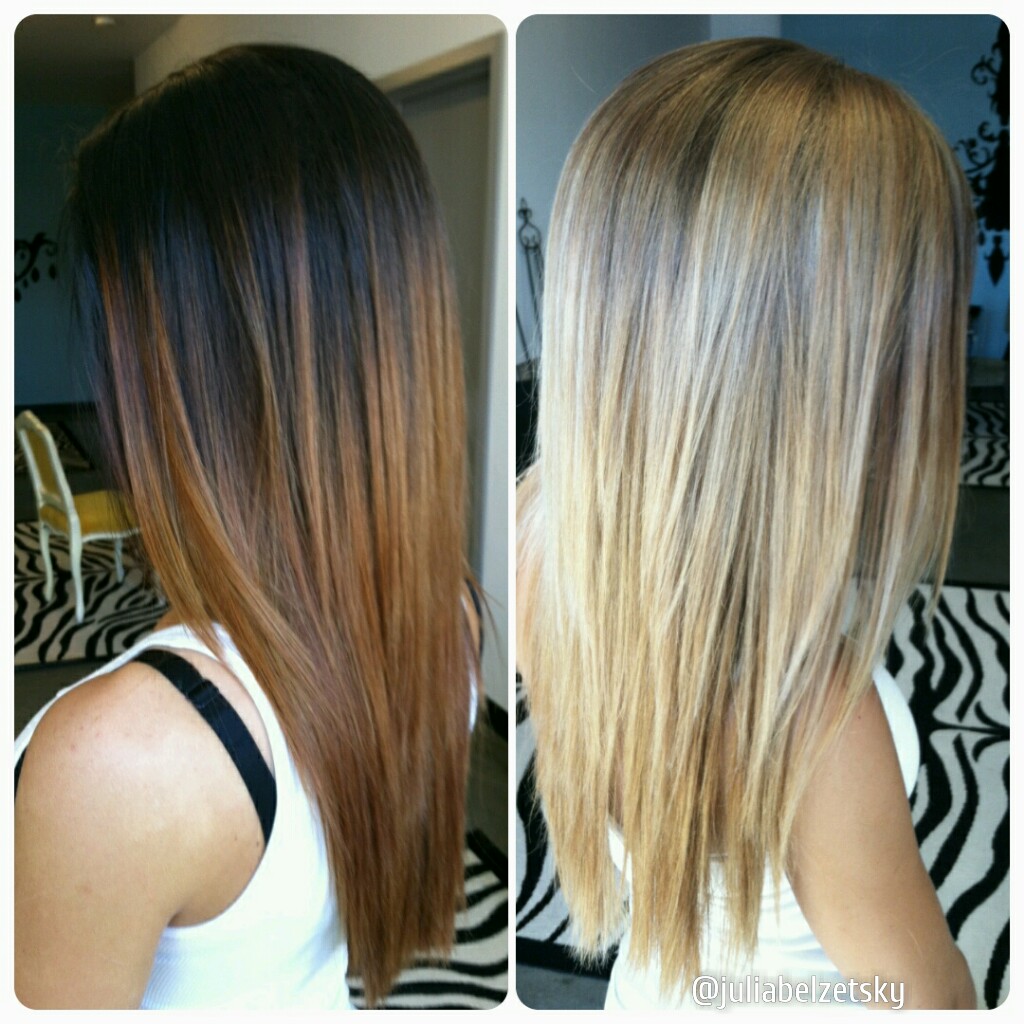
But..How Did She Go So Blonde, So Fast?
My client, Esther, (shown in the pics above) came to me after coloring her own hair. She’d used a permanent color with a particularly strong developer that made it even harder to lift the pigment out of her hair.
So, what was my first step? Just like I explained above, I gave Esther a thorough consultation! Only once I’d explained realistic expectations and was sure we were on the same page, did we start her sessions.
Esther required five sessions to get her to her goal. However, her hair was pretty light after just round two—that was rare. But then, Esther’s first two appointments were six hours each—and two weeks apart—which was enough time to allow her hair to regain some strength in between processing.
Why six hours? Normal sessions are three to four hours, but Esther’s hair is very long and thick. It was her willingness to commit to as much time as needed that helped make Esther’s color correction a best case scenario.
And remember, Esther didn’t take just two weeks. She had a total of five sessions to achieve her very-blonde goal. Another aspect that made Esther such a pleasure to work with is that she rocked every color in between—with only one small trim over the entire span of sessions.
Results like Esther’s are also thanks to the Olaplex treatment we added to her service. The treatment, which has quickly become THE hot new holy grail service for those heading towards lighter shades, helps hair remain stronger than stylists ever thought possible.
Click on the picture below to check out Esther's Instagram for Fashion & Fitness inspiration.
Have you ever thought of going lighter?
If you have any more questions about how it works, what to expect, or even how to plan your in between stages, please ask me in the comments below!
I hope this give you insight as to how going from light to dark is done—both as a color correction and in the how many sessions it requires.
Also, if you are a stylist please add anything I missed in the comments below! It’s only when clients understand what they realistically expect that we can exceed their expectations. Thanks for reading and please share!




